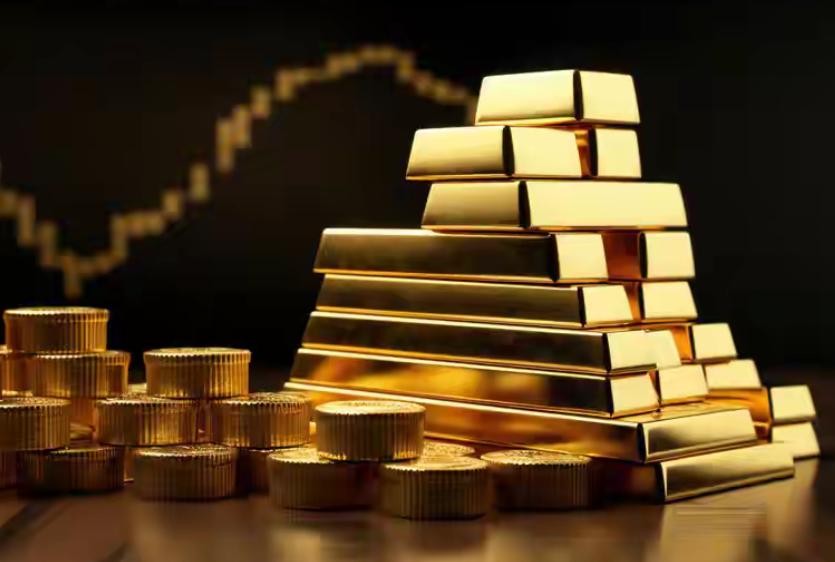
Last week, the international gold futures spot price broke through the 3,000 US dollars per ounce mark, of which, the US New York Mercantile Exchange gold futures price 14 intraday once reached 3,017.1 US dollars per ounce, a record high. At the same time, the US dollar continued to weaken, causing widespread concern in the market. Many media and experts believe that the surge in gold prices this time not only reflects the rising risk aversion in the market, but also shows signs of shaking the global dominance of the US dollar. Since the beginning of this year, the United States has successively imposed tariffs on major trading partners such as Mexico and Canada, and imposed 25% tariffs on all steel and aluminum imports into the United States, which has been countered by many countries. At the same time, the government laid off tens of thousands of federal workers, adding to concerns about the outlook for economic growth. Former U.S. Treasury Secretary Lawrence Summers said in an interview that U.S. President Donald Trump's erratic policy actions and rhetoric are eroding trust in the U.S. dollar in global markets, and the sharp rise in gold prices is a manifestation of that uncertainty.
The rise of the international gold fever has brought complex and multi-faceted impacts to the international financial and economic fields. First, the impact on the global economic pattern, the rise of the international gold fever has prompted central banks and investors to increase their holdings of gold, which helps reduce dependence on the US dollar and promote the development of the global economy in the direction of diversification. As an internationally recognized safe-haven asset, the rise in the price of gold helps to enhance the international status of non-US dollar currencies, thereby enhancing the stability of the global economy. The volatility of the gold price may trigger turbulence in the global capital market, which in turn affects the stability of the global economy. A challenge to the dollar's status as the world's reserve currency could lead to a restructuring of the global monetary system, triggering a series of economic, financial and trade adjustments.
The second is the impact on the financial market and investors, the rise in gold prices is often accompanied by volatility in the financial market. When confidence in the dollar declines, investors may turn to safe-haven assets such as gold, exacerbating volatility in financial markets. Such volatility may affect the prices of traditional financial assets such as stocks and bonds, leading to increased uncertainty in the market. The rise in gold prices could change investors' asset allocation strategies. Some investors may reduce their holdings of traditional financial assets and instead increase their allocation to safe-haven assets such as gold in response to potential market risks. This change in asset allocation can affect the flow of funds and price movements in financial markets. The rise in gold prices could change investors' appetite for risk. Some investors may become more cautious and conservative, preferring to invest in less risky assets. This change in risk appetite can affect the flow of funds and price movements in financial markets. The rise in the price of gold and the challenge to the dominance of the US dollar can trigger market panic and uncertainty. Such uncertainty may lead to fluctuations in investor sentiment, which in turn affect the stability and development of financial markets.
The third is the impact on the exchange rate market. As the global reserve currency, the fluctuation of the exchange rate of the US dollar has an important impact on the global economy and financial market. When market confidence in the dollar declines, the dollar's exchange rate may fall, affecting global trade and investment activities. A rise in gold prices could exacerbate volatility in the dollar's exchange rate, as investors may shift money from dollar assets to safe-haven assets such as gold. In the long run. A sustained challenge to the dollar's dominance could further drive a restructuring of the global exchange rate system. This reconstruction may include the establishment of a new international monetary system and the formation of a multi-polar monetary system. The restructuring of the exchange rate system will have a profound impact on the stability and development of the global financial market.
To sum up, the international gold boom reflects that the challenge to the dominant position of the US dollar has many financial impacts, which are intertwined and work together, and have a far-reaching impact on the stability and development of the global financial market.

Since 2022, the Fed has cumulatively reduced its balance sheet by $2.4 trillion through quantitative tightening (QT) policies, leading to a near depletion of liquidity in the financial system.
Since 2022, the Fed has cumulatively reduced its balance sh…
On December 11 local time, the White House once again spoke…
Fiji recently launched its first green finance classificati…
Recently, the European Commission fined Musk's X platform (…
At the end of 2025, the situation in the Caribbean suddenly…
The U.S. AI industry in 2025 is witnessing a feverish feast…